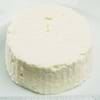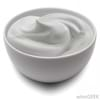Milk Powder vs Blue Cheese
Calories
Calories in 1 pat
434.00 Kcal
13
Not Available
Calories per 100g
362.00 Kcal
27
353.00 Kcal
30
Calories in 1 tbsp
17.00 Kcal
5
Not Available
Calories in 1 cup
Not Available
Not Available
Calories in 1 stick
Not Available
Not Available
Serving size
100
100
Proteins
36.16 g
5
21.40 g
25
Carbs
51.98 g
6
2.34 g
99+
Fiber
0.00 g
15
0.00 g
15
Sugar
51.98 g
99+
0.50 g
9
Fats
0.77 g
5
28.74 g
99+
Saturated Fat
0.50 g
4
18.67 g
99+
Polyunsaturated Fat
0.03 g
99+
0.80 g
32
Monounsaturated Fat
0.20 g
99+
7.78 g
31
Nutrition
Serving Size
100
100
Cholesterol
20.00 mg
99+
2.50 mg
99+
Vitamins
Vitamin A
22.00 IU
99+
721.00 IU
25
Vitamin B1 (Thiamin)
0.42 mg
3
0.03 mg
28
Vitamin B2 (Riboflavin)
1.55 mg
2
0.38 mg
17
Vitamin B3 (Niacin)
0.95 mg
8
1.02 mg
6
Vitamin B6 (Pyridoxine)
0.36 mg
6
1.50 mg
1
Vitamin B9 (Folic acid, Folate)
50.00 µg
7
36.00 µg
10
Vitamin B12 (Cobalamin)
4.03 µg
1
1.22 µg
17
Vitamin C (Ascorbic acid)
6.80 mg
2
0.00 mg
29
Vitamin D
0.00 IU
39
21.00 IU
21
Vitamin D (D2+D3)
0.00 µg
18
0.50 µg
12
Vitamin E (Alpha- Tocopherol)
0.00 mg
99+
0.25 mg
24
Vitamin K (Phylloquinone)
0.10 µg
26
2.40 µg
12
Minerals
Calcium
1,257.00 mg
3
528.00 mg
22
Iron
0.32 mg
35
0.31 mg
36
Magnesium
110.00 mg
7
23.00 mg
21
Phosphorus
968.00 mg
3
387.00 mg
24
Potassium
1,794.00 mg
1
256.00 mg
19
Sodium
535.00 mg
27
1,146.00 mg
8
Zinc
4.08 mg
5
2.66 mg
20
Other
Water
3.16 g
42.41 g
Caffeine
0.00 g
0.00 g
Benefits
Health Benefits
Aids absorption of nutrients, Beneficial for reproductive system, Enhances calcium absorption, Enhances growth in children, Favorable for infants, Strong & healthy muscles, Absorps of Calcium & Vitamin B, Lowers the risk of gallstones, Presence of calcium, Presence of calcium makes teeth strong & healthy, Reduces nutrient deficiency, Reduces vitamin inadequancy
Aids nervous system
Other General Benefits
Good for bones, Good for eyesight, Good for immune system, Presence of calcium makes teeth strong & healthy, Protects arteries, Prevents Cancer
Presence of calcium makes teeth strong & healthy, Protects arteries, Prevents Cancer
Hair and Beauty Benefits
Skin Care
Not Available
Exfoliates dead skin from body, Gives glowing and flawless skin, Gives a smoother skin, Natural skin softner
Hair Care
Not Available
Best remedy for dry and rough hair, Excellent hair conditioner, Stimulates hair growth
Nutritional Importance & Uses
Uses
Fat free powdered milk is used as a saturating agent in Biotechnological processes, It has many culinary uses in both sweet and salty dishes., It is a common item in places where fresh milk is not a viable option, like fallout shelters., It is sometimes used in film-making as a nontoxic prop., It is used in the recipes where adding milk would make the product thin, like baked goods., No uses found
Used to make dressings and toppings on Burgers and Salads
Nutritional Importance
Good source of Calcium, Good source of protein, Rich in Vitamin A, Rich in Vitamin D
Contains good amount of Vitamins, Contains high levels of Fat, Contains Magnesium, Good source of Calcium, Good source of calories, Good source of Potassium, Good source of protein
Allergy
Milk Powder and Blue Cheese Allergy Symptoms
Abdominal bloating, Abdominal cramps, Abdominal pain, Anaphylaxis, Constipation, Flatulence or gas, Headache, Loose stool containing blood or mucus, Not Available, Oral swelling, Rashes in the form of hives, Skin inflammation, Sneezing, Tightening of throat, Vomiting
Diarrhea, Hoarseness of the throat causing difficulty in swallowing, Itchy Skin rashes, Nasal congestion, Not Available, Persistent coughing bouts, Runny or stuffy nose, Swelling of throat, Vomiting, Watery eyes, Wheezing
What is
What is
Powdered milk or dried milk is a dairy product made by evaporating milk to dryness. The purpose being to extend shelf life.
- Blue cheese is a general classification of cheese that have cultures of the mold Penicillium added, so that the final product is spotted or veined throughout with blue.
- It carries a distinct smell, either from that or various specially cultivated bacteria.
Color
White
Not Available
Milk Powder and Blue Cheese Flavor
Milky
Salty, Sharp, Tangy
Milk Powder and Blue Cheese Aroma
Milky
Sour smell, Strong
Vegetarian
Yes
No
Origin
Russia
Europe, France
How to make
Serving Size
100
100
Ingredients
Pasteurized Milk
Cheese Salt, Mesophilic starter culture, Milk, Penicillium Roqueforti bacteria
Fermentation Agent
Not Applicable
Mold Penicillium glaucum, Mold Penicillium roqueforti
Things you need
Not Applicable
2 Bowls, Sauce pan, Stirrer
Time Duration
Preparation Time
Not Available
15- 20 minutes
Cooking Time
Not Available
20
Aging time
Not Applicable
Not Available
Storage & Shelf Life
Refrigeration Temperature
40.00 °F
18
39.20 °F
19
Shelf Life
2 years
3-4 weeks












